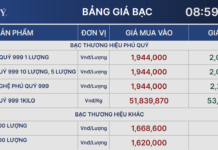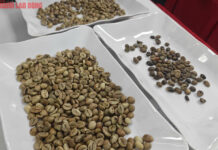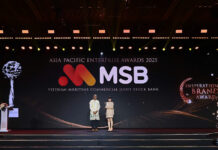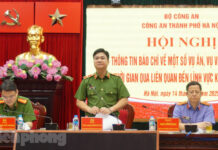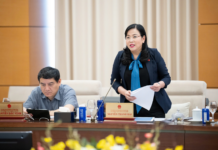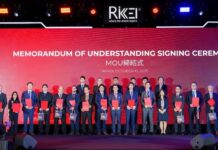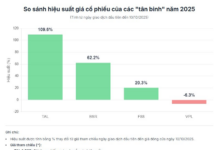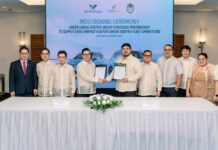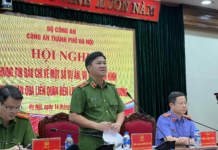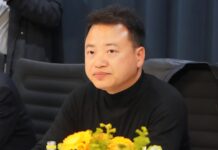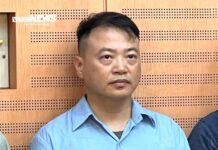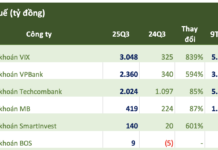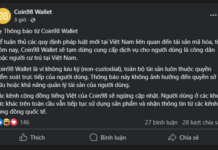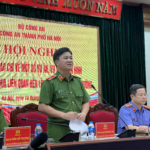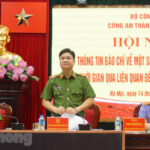Vietnamese police arrested seven individuals involved in a counterfeit medicine operation: Nguyễn Văn Hưng (DOB: 1990) from Đắk Nông province; Trương Quốc Phong Dinh (DOB: 1997) and his brother, Trương Quốc Dũng (DOB: 1998), from Cần Thơ city; Nguyễn Thị Kiều Trang (DOB: 1991) from Hanoi; Nguyễn Văn Tài (DOB: 1998) from Nam Định province; Nguyễn Hoàng Chung (DOB: 2006) also from Đắk Nông; and Ngô Tiến Thành (DOB: 1990) from Hà Nam province.
During the investigation, the Thanh Hóa City Police Department conducted urgent searches at five locations, including production sites, storage facilities, and the suspects’ workplaces in Hanoi, Cần Thơ, and Bến Tre province.
The police seized a significant amount of counterfeit medicines, mainly antibiotics, such as 657 boxes of Cefuroxim 500mg, 3,258 boxes of Cefixim 200mg, 100 boxes each of Augxicine 1g and Panadol Extra, 724 boxes and 1,080 bottles of Panactol. Additionally, they confiscated raw materials and equipment used in the production of counterfeit antibiotics, including 2.2 tons of additives and excipients, 1,000 instruction sheets for Cefuroxim, 10 Panactol box shells, and machinery like presses and blister-packing machines.
According to the initial investigation, Nguyễn Văn Hưng, the ringleader, took advantage of people’s self-medication habits and lax state management of pharmaceutical business operations. He colluded with Trương Quốc Phong Dinh to establish a company in Bến Tre province, disguising their illegal production and trading of counterfeit medicines, especially antibiotics such as Cefuroxim, Cefixim, Augxicine, Panadol Extra, and Panactol. Hưng tasked Dinh with procuring the necessary machinery, equipment, raw materials, and excipients for producing these fake drugs.

Posing as a pharmacist who bought and sold medicines for pharmaceutical companies, Dinh used social media platforms like Zalo and Facebook to purchase unregulated imported medicines. He then used chemicals to erase the printed information on the blister packs and reprinted them, creating new medicines with false information.
Dinh also purchased domestically produced medicines with authentic origins and cheap prices. He soaked the tubes in water to remove the original manufacturer’s labels and then reprinted and affixed fake labels, passing them off as imported medicines to be sold at higher prices.
In this operation, Hưng and Dinh assigned specific roles to their accomplices. Trương Quốc Dũng (Dinh’s brother), Nguyễn Văn Tài, and Nguyễn Hoàng Chung were tasked with renting warehouses in secluded areas in Bến Tre and Cần Thơ. They also hired workers, mostly relatives or acquaintances, who lived and worked in isolation at the company’s facilities. Dinh oversaw the production process, assigning roles for mixing, blister-packing, and other tasks.
Dinh then used social media to advertise his counterfeit antibiotics as leaked products from reputable companies, claiming they were surplus from contract bids or high-selling products that couldn’t be invoiced. This way, he sold large quantities of fake medicines to individuals and consumers, mainly targeting freelance pharmacists in northern and southern medicine markets.
Based on the evidence gathered, the Thanh Hóa City Police Department has decided to prosecute the case and charge the seven suspects with the crime of “Production and Trading of Counterfeit Preventive and Curative Medicines” according to Clause 2, Article 194 of the Penal Code.

